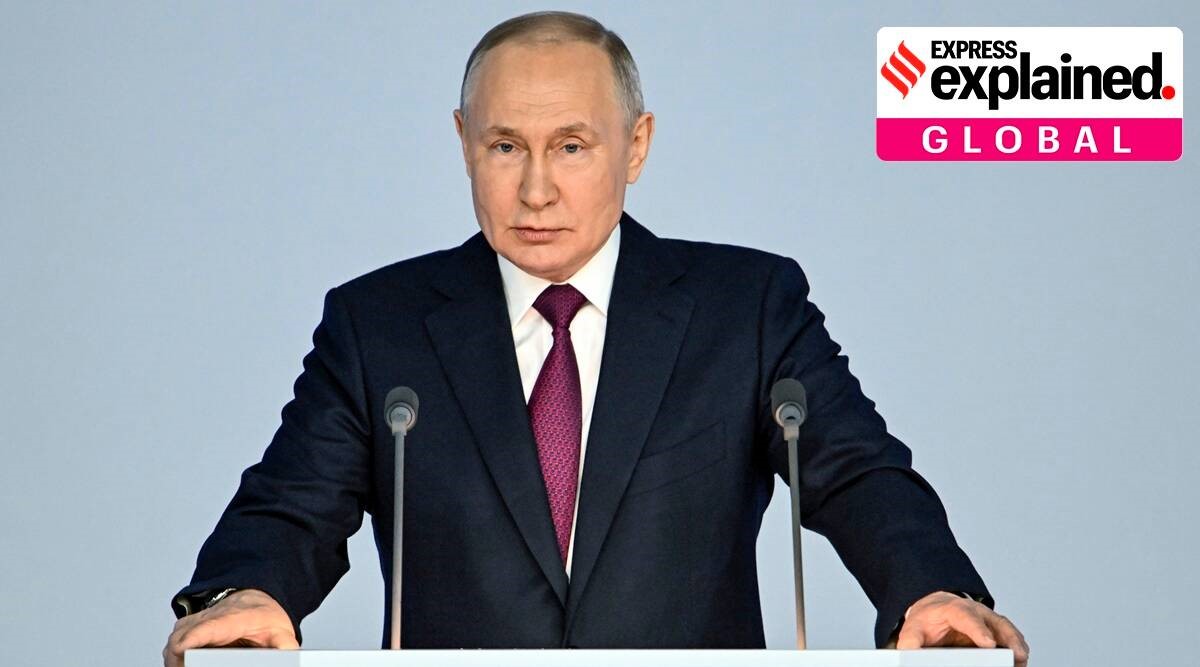Description

Copyright infringement not intended
Context: Days before the first anniversary of the beginning of the war in Ukraine, President Vladimir Putin announced in an address to his nation that Russia is suspending its participation in the New START, the last remaining major military agreement with the United States.
Details:
- Putin said the fact that the US wants to inspect Russia’s military facilities — a requirement under the treaty — while at the same time saying openly that its goal is Russia’s strategic defeat, was the “theatre of the absurd”.
.jpeg)
What is the New START?
- The name START comes from the original “Strategic Arms Reduction Treaty”, known as START-I, which was signed between the US and the erstwhile USSR in 1991, and came into force in 1994.
- START-I, which capped the numbers of nuclear warheads and intercontinental ballistic missiles (ICBMs) that each side could deploy at 6,000 and 1,600 respectively, lapsed in 2009, and was replaced first by the Strategic Offensive Reductions Treaty (SORT, also known as the Treaty of Moscow), and then by the New START treaty.
- The New START, officially, the “Treaty between the United States of America and the Russian Federation on Measures for the Further Reduction and Limitation of Strategic Offensive Arms”, entered into force on February 5, 2011, and placed new verifiable limits on intercontinental-range nuclear weapons.
- The two countries had to meet the treaty’s central limits on strategic offensive arms by February 5, 2018, and to then stay within those limits for the period the treaty remained in force.
- The US and Russia subsequently agreed to extend the treaty through February 4, 2026.
What limits did the New START impose on the two countries?
- 700 deployed intercontinental ballistic missiles (ICBMs), deployed submarine-launched ballistic missiles (SLBMs), and deployed heavy bombers equipped for nuclear armaments;
- 1,550 nuclear warheads on deployed ICBMs, deployed SLBMs, and deployed heavy bombers equipped for nuclear armaments (each such heavy bomber is counted as one warhead toward this limit);
- 800 deployed and non-deployed ICBM launchers, SLBM launchers, and heavy bombers equipped for nuclear armaments.

Compliance:
- Detailed procedures for the implementation and verification of the central limits, and all treaty obligations, are part of the treaty terms.
- The treaty provides for 18 on-site inspections per year for US and Russian inspection teams.
- Type One inspections focus on sites with deployed and non-deployed strategic systems (up to 10 per year), and Type Two inspections focus on sites with only non-deployed strategic systems (up to 8 per year).
- Since the New START Treaty’s entry into force, as of February 1, 2023, the two parties have conducted 328 on-site inspections, exchanged 25,311 notifications, held 19 meetings of the Bilateral Consultative Commission, and held 42 biannual data exchanges on strategic offensive arms subject to the treaty.
Status of compliance:
- US said that Russia was not complying with the New START, only remaining nuclear arms control treaty between the two countries, jeopardizing a source of stability in their relationship.
- Russia’s refusal to facilitate inspection activities prevents the United States from exercising important rights under the treaty.
- Russia has also failed to comply with the New START treaty obligation to convene a session of the bilateral consultative commission in accordance with the treaty-mandated timeline.


https://indianexpress.com/article/explained/explained-global/russia-suspends-new-start-what-is-its-last-remaining-nuclear-arms-treaty-with-us-8458806/













